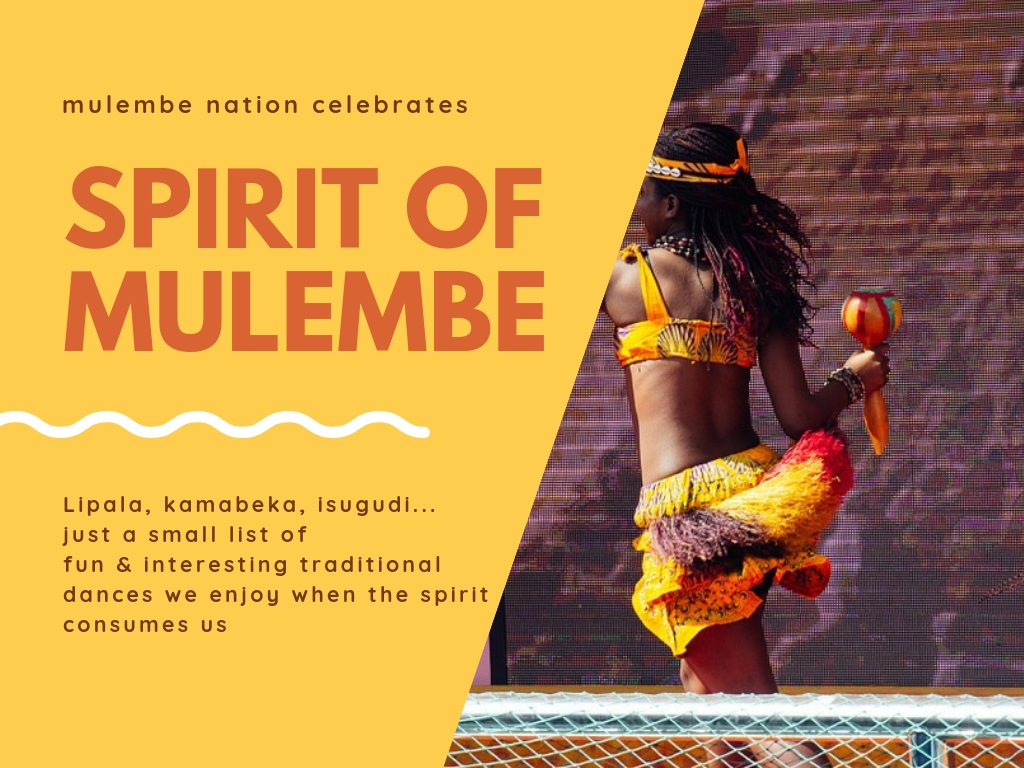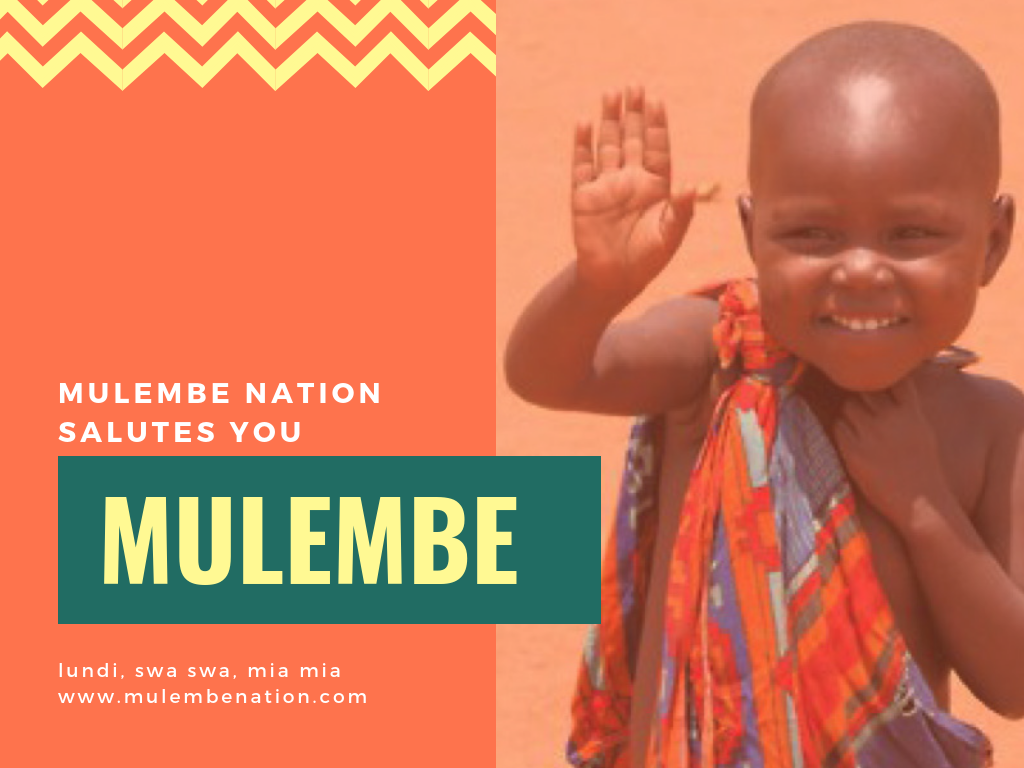In contemporary Kenyan speak, mention of the word mulembe takes you to western Kenya. The land of engoko (chicken). Home to some of the finest Kenyan tea. The sweetest Kenyan sugar grows here too. Yet it’s a fertile land whose full agricultural potential remains untapped. A cultural hotbed famed for its traditional delicacies made with munyu musherekha. The navel of the finest of lads famed for their prowess under covers. And homely women with generous curves to comfort any soul. Abami roam this land. Yet a cloud hangs over the true meaning of that which made these people so great: what does mulembe mean?
subscribe
Subscribe to Mulembe Weekly
Get culture, language, stories and discussions in your inbox every Friday 5 PM East Africa Time
TL;DR
- Mulembe is a greeting;
- It means peace;
- It’s also a people – its how the Luhya refer to themselves, their culture and traditions;
- And a way of life;
- and a tree of huge cultural importance among the Luhya.
Mulembe is a greeting
Mulembe is a universal way of greeting that is not tied to time of day. Unlike most greetings in African culture, it is also does not tell of the relationship between the persons greeting each other. For example, among the Kamba, wacha is how how how an elder greets a child or someone younger than them. Not so with mulembe.
Therefore, If you are to find yourself among Luhyas, and are unsure of their tongue or unfamiliar with how to speak it, mulembe is you should greet them. It works all the time in all situations. Slight intonations in how one pronounces mulembe do exist across the various Luhya sub tribes dialects. Common ones are milembe, mirembe, mlembe and murembe.
When among a large multitude of Bukusu, adding the words mia mia will communicate the abundance of your pleasure being among them. It says that you’ve got hundreds of sack full of well wishes for everyone.
Among the Maragoli, adding the word vosi, translates to “Greetings to you all.”
What do you say when greeted mulembe?
When greeted mulembe, answer “mulembe muno”. Muno means “good” in most Luhya dialects. In the next dive into the true meaning of mulembe, we learn why this greeting is so much similar to the Arabic greeting As-Salaam-Aluikum: “Peace be unto you.”
Mulembe is peace
A literal translation of mulembe is peace. Therefore, greeting someone mulembe is wishing peace unto them. Thus the common salutation mulembe muno is an affirmation of mutual desire for peace among brethren.
When the Luhya people of modern times refer to themselves as people of mulembe, the intention is to wear on their sleeves centuries old, shared community ethos of peace. It is an ode to their ancestors as well as a proclamation of deep seated communal pride.
Mulembe as peace is the central value of the African ethics of the Luhya people. A people who in the neoliberal, ethnicized Kenyan existence are often bastardized for their sense of social harmony, cooperative living, justice and fairness.
Still, beyond manifestations of such debauchery – “jokes” on pop media and political rhetoric that stereotype the modern Luhya as naive, even primitively foolish – the people of mulembe continue to thrive. As the next section informs us, they are a proud people too. Though not known for showboating, the Luhya have more than enough collective reasons to be proud.
Mulembe is a people
A proud nation of what, 10 million? The people of mulembe share close ties with the Masaba people of Eastern Uganda and Kisii of South Nyanza, Kenya. A people so proud to not be in-dignified by taking up with gusto blue collar jobs. Vocations that others might shun as lowly yet they grease the cogs that run East and Central Africa’s global capital – Kenya. For the roots of the people of mulembe are anchored in a social fabric steeped in a strong belief of an honest wage for honest work. This mantra being the only just reward for their acclaimed strong work ethic.
A people whose sons and daughters have ruled the corridors of academia both locally and in the most hallowed of lecture halls. Yet, for every Calestous Juma, Francis D. Imbuga, Joseph Otiende, they gift the world, there is: Kenya’s answer to Pele – Joe Kadenge; the polymath Joe Masiga; the legendary Daudi Kabaka; the late Maurice Micheal Otunga who’s on the path to sainthood; beauty queen hall-of-famer Winfred Omwakwe.
Let’s not even get started on the Collins Injeras, Bien-Aime Barazas and Victor Wanyamas. Or should we talk about Masinde Muliro, The Aworis, Julia Ojiambo and their contemporaries? What’s will be remembered about these mwana amberis is not what they did. Neither will it be how they broke down glass ceilings and sailed uncharted waters. Nor is it how they broke in paths for humanity. It will be how they lived their lives full of the spirit of mulembe.
Mulembe is a way of life
The spirit of mulembe is that which made Kenya fall in love with its favorite protein chicken. It is a way of life (learn more about it here) that teaches us to be good hosts. It’s behind our unashamed love for a good feast – even at solemn occasions like burials; Because, why not when there’s good food to be enjoyed: isindu, muduya, murere, seveve ga’ amabere, engokho ye munyu kwa lukhaye and enyama esike?
A man who calls his kinsmen to a feast does not do so to save them from starving. They all have food in their own homes. When we gather together in the moonlit village ground it is not because of the moon. Every man can see it in his own compound. We come together because it is good for kinsmen to do so
Chinua Achebe, Things Fall Apart
And once we are done with the feasting, we will send you home with ‘greetings’ for those who couldn’t make it. The greetings will consist of paper bags of left over food to share with baba watoto and watoto back home. Therefore, let it be known that if you fail to offer paper bags for carry home at your feast, we will demand for them. Because mulembe is unbounded generosity. It is about spreading the cheer.

Salams, Mulembe night and night-outs
The cheer of the spirit of mulembe taught Kenyans to wish peace upon their brethren no matter the distance. In the last millennia we did that through salamu ya radio. Today you’ve all joined us judging by generation x love for sending ‘shout outs’. This mulembe tradition of sending peace to kin and kindred is now the staple of every hip radio and TV show out there.
Then there is the reason why Mulembe Nights are the most popular of culturally themed night-outs across the republic. It is the spirit. It is also that which makes a night out in Busia fall neatly in its place in your pile of ‘what happens in Vegas Busia stays in Vegas Busia.
Why every Luhya thing is a festival
It is the spirit of mulembe, that on meeting the right conditions, transforms the Mashemeji derby into the most important event in the Kenyan sports calendar. And that feel good vibe that team Kenya sprinkles on the IRB Sevens Rugby World Series? Well, I’d bet a kidney it’s the spirit brought on by the large contingent of our boys in there.

The bullfights of Malinya stadium in Ikolomani, Kakamega county? That’s the spirit raw. And when we make a festival out of the circumcision season? That’s to commune with the living dead and ancestors. Inviting them to dance with us in celebration of the strength within the tribe. The hordes of young men ready to face the knife assure us that the tribe is strong.
What about the Maragoli, Tiriki, Bunyore, Isambo Beach Carnival and other Luhya cultural festivals that go down after Christmas, ever year across mulembe nation? Those are about leaving the bad of the old year behind. The spirit of mulembe is antipathetic to baggage. For there can’t be peace when we carry to much baggage around. It is also usher in the new year in style. To help along our brethren and sisters from the city reconnect with their roots. But every good spirit has its curse. Mulembe’s is no different.
Mulembe the tree
Every commune needs strong deterrents to keep members working for the tribe and not against it. For the people of mulembe, the sanctity of their ethos is kept sacred by the reverence paid to a tree. It is a tree with cultural significance to the all Luhyas, cutting across the various clans.

Curiously, the tree is known as mulembe all across the nation. Possibly because of the role it plays in preserving the social fabric. This is a tree whose only good function is in curing measles (keheregete). The viral disease was believed to be cured through the performance of some rituals by it.
Otherwise, it was the tree where suspects of grave crimes such as incest, murder and witchcraft were interrogated under by elders. Trust me, you wouldn’t want to find yourself in a situation that demanded being interrogated under the mulembe tree. Because it was equivalent to entering the outer circle of Dante Alighieri’s nine levels of hell.
FAQ On Mulembe, Western Kenya and The Luhya
The best answer is at best a proxy gleaned from the preliminary report of the Kenya census 2019. Based on 2009 data that had Luhyas as 16% of Kenya’s population, the estimated number of Luhyas in Kenya should be around 7.6 million if we assume that they still are 16% of the 47,564,296 Kenyans (2019 census). For a conclusive answer, we await the full report of the census. Nonetheless, we have broken down the numbers from the preliminary report by sex, geography and population density for in our report on the population of western Kenya.
Luhya unity is a favorite topic in Kenyan politics. However, this subject is often discussed in the narrow prism of political unity as demonstrated by backing a single candidate or ticket in a presidential election. In our post on the The battle for Luhya votes: Betrayal and the politics of nabutundu, we provide an alternative view on Luhya politics in the context of Kenyan politics.
For a community that largely farms, the sheer number of plants considered to be indigenous vegetables is no surprise. We’ve complied an ultimate list of Luhya traditional vegetables and they amounted to more than 15 different plants and counting. Of the fifteen, only a few are considered wild or weeds. Indeed the majority are cultivated plants. Want to know which the specifics? Check our in depth article that let’s you meet 15+ Luhya traditional vegetables including recipes, photos, trivia, nutitional information and more.

